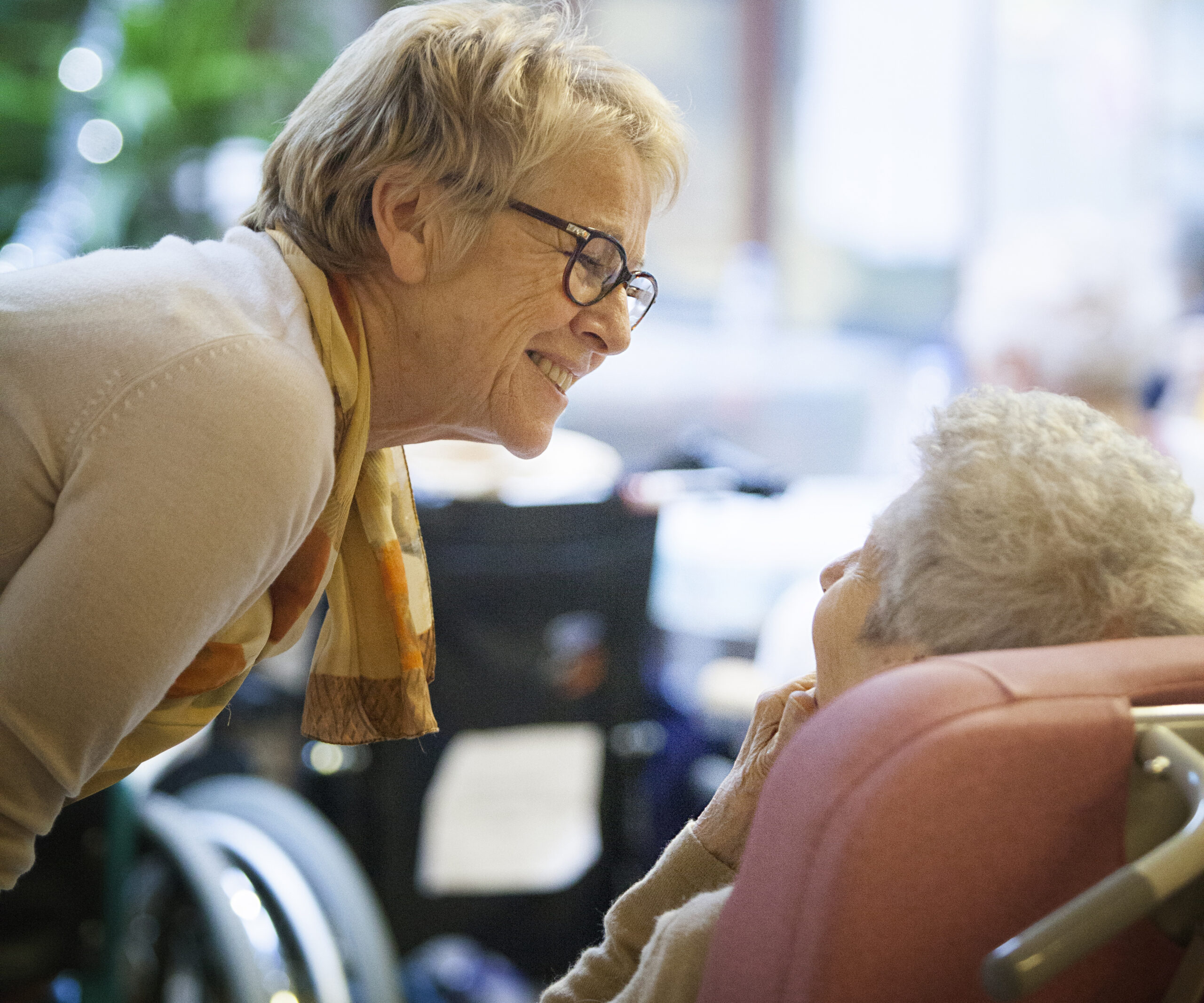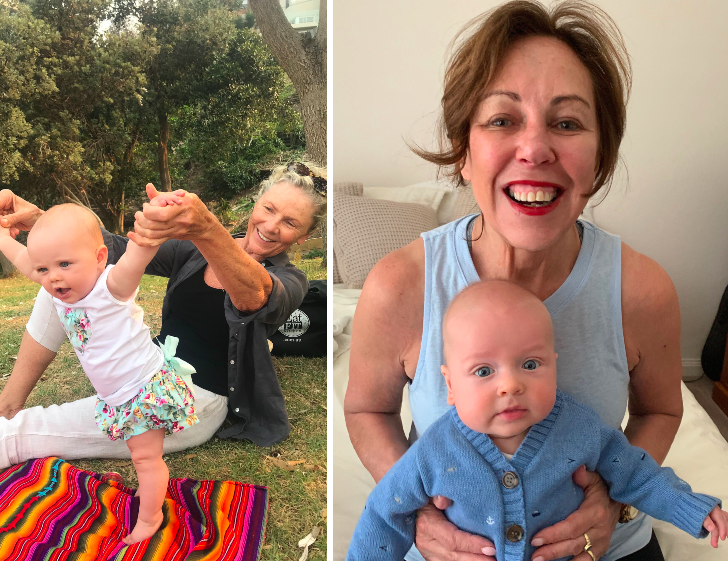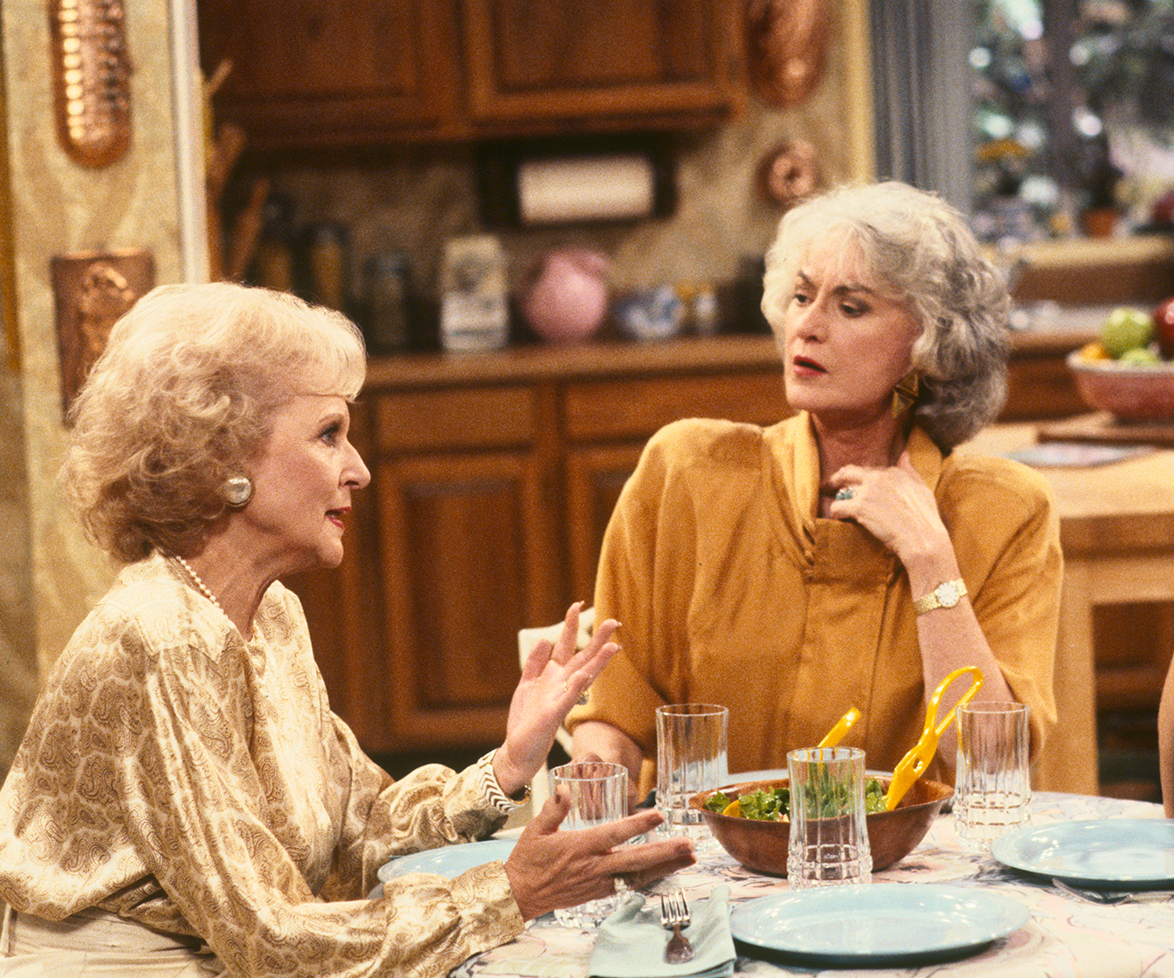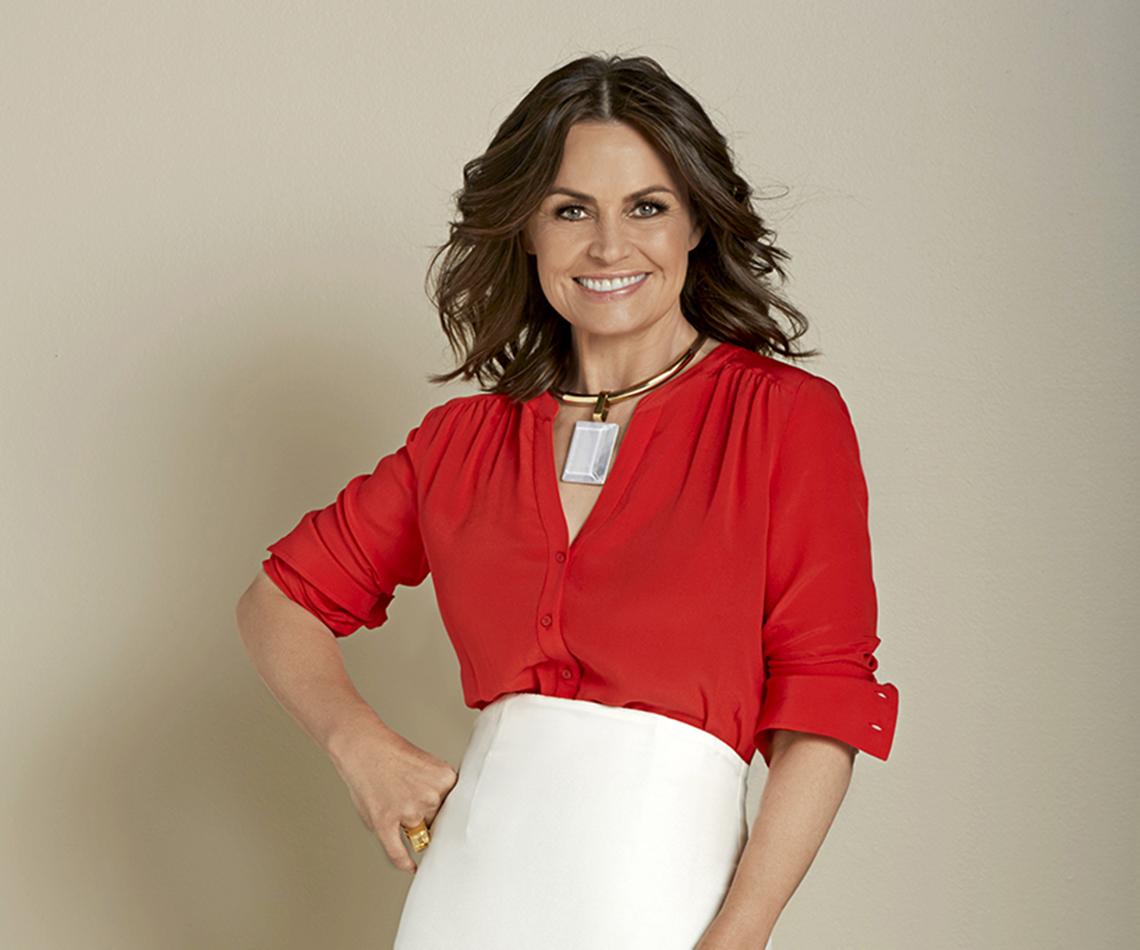It was a wet Thursday afternoon in March. A southerly was blowing. Angela Finn closed her laptop and gazed out her front window on a wild, grey Coogee Beach.
She was feeling a little bit teary. Australia had that day recorded its 13th death from COVID-19. Prime Minister Scott Morrison was urging people to stay at home and stressing the need for social distancing.
Angela’s mother, Pam Bryce, lived across town in an aged care home, and she’d just received an email alerting her that a lockdown would be imposed there immediately. There would be no visitors allowed in and no daytrips out … indefinitely.
“We had just a day’s notice. It was such a shock,” Angela tells The Weekly. “I was worried. Mum is 87. She has been diagnosed with vascular dementia. With her cognitive decline, the phone is difficult for her.”
“I was petrified for her mental and physical wellbeing. The bushfires at the start of the year had made her very anxious and when COVID hit, her confusion and anxiety increased tremendously.”
“She worried about her family. She would ask again and again, ‘What is COVID? What does Mr Morrison want us to do? Is everyone going to be all right?'”
The Royal Commission into Aged Care Quality and Safety had released its interim report – ominously titled ‘Neglect’ – just five months earlier, and that was a worry, too.
While the home that Pam was in was “not one of those places you read about; it was a good home”, Angela knew the pandemic would create extra pressure.
And she knew the aged care sector was already at breaking point. Like so many families around Australia, she began to wonder if she could bring her mother home.
The night before the lockdown, Angela didn’t sleep at all, but the next day she rose with a fire in her belly. “How could I leave Mum alone?” she says. “How could I entrust her care to strangers in a time of crisis? It didn’t feel right at all.”
Thanks to COVID restrictions, her weekend job as a celebrant was on hiatus and the charity that employed her on weekdays had sent everyone home to work remotely.
Plus, fortuitously, her youngest daughter Eloise had just graduated from university and was looking to move out on her own. Angela hoped all that might give her the space and flexibility to care for Pam.
She spoke to her siblings. Some of them were incredulous, but there was no opposition. Then there was her husband, Joe. “If it was my mother, I would do the same,” he said.
Within a fortnight of the lockdown Pam was home, just as COVID began to spread through aged care centres in NSW.
Five months later, The Weekly has been invited to afternoon tea in the Finn family’s cosy kitchen. Pam, who was for many years one of David Jones’ ‘ladies in black’ and is still a picture of elegance, is sorting through old photos with her granddaughter Madeleine.
Belle the bouncing corgi is looking for a pat, while Angela is sharing a little of the personal odyssey this family has undertaken, and pondering what the upheavals of 2020 will mean for aged care generally.
It has been disturbing for the whole family to watch the system buckle, as Angela suspected it might, and elderly people die under the pressure of the pandemic.

Pam feels safe in daughter Angela’s home and enjoys quality time with her grand-daughter Madeleine.
(Alana Landsberry)“To be honest,” she says, “COVID has opened my eyes to the fact that we don’t cherish and value elderly people as much as we should. Ageism is prevalent in Australian society.
You don’t see many elderly people out. Where are they? Out of sight, out of mind. We’re not acknowledging their gifts or their wisdom or their life experience.”
Instead, we’ve seen them as a problem that needs solving.
The Royal Commission into Aged Care’s Interim Report reached a very similar conclusion. “As a nation, Australia has drifted into an ageist mindset that undervalues older people and limits their possibilities,” it began, and went on to list a litany of horrors that it had uncovered in the aged care system.
The Royal Commission heard tales of people walking into an aged care home “frail but in relatively good spirits and mentally alert, only to die a few months later after suffering from falls, serious pressure injuries and significant pain and distress”.
The commissioners found that 22-50 per cent of people in residential aged care are malnourished. They discovered that 61 per cent of residents are regularly taking psychotropic agents, and that in roughly 90 per cent of those cases, the drugs are being used unnecessarily.
They also found poor pain control; poor treatment of wounds that had led to septicaemia and even death (they were shown images of maggots in open sores); and poor continence management (people left lying in urine and faeces).
The commissioners also found 4013 notifications of alleged or suspected physical and/or sexual assaults in aged care in 2017 and 2018 alone.

“We’re not acknowledging their gifts or their wisdom or their life experience.”
(Alana Landsberry)“It is shameful,” they concluded, “that such a list can be produced in 21st-century Australia.”
Nor is it much better for the increasing numbers of older people who continue living at home. The Royal Commission heard reports of such interminable waiting times for home care packages that the applicants died before assistance came through.
Angela speaks for so many of us when she asks, “How has it come to this? How have we become so resigned to this? What’s wrong with us? What’s wrong with this system?”
The subjects of these frightful statistics, she rightly points out, are real people like Pam. They’re parents and grandparents, neighbours and colleagues, people who have fought in wars, raised families and steered corporations.
And there are probably a few ratbags, too. But “at the heart of these problems,” the commissioners explained, “lies the fundamental fact that our aged care system essentially depersonalises older people.”
Professor Kathy Eagar, Director of the Australian Health Services Research Institute at the University of Wollongong, shares a number of the royal commissioners’ concerns.
She believes that COVID is shining “a very powerful light” on our attitudes to ageing in Australia, and particularly on the structural faults in the aged care system – faults that she traces back to the Aged Care Act that passed through federal parliament in 1997.
WATCH BELOW: The Queen and Princess Anne – mother and daughter unite for a chat over Zoom. Article continues below.
The Aged Care Act was devised in an atmosphere of hysteria about “our ageing population” and an impending “tsunami of older Australians” whose care the government claimed it simply could not afford.
The Act transferred responsibility for aged care from the states to the federal government, which essentially wiped its hands of the whole sorry sector and invited private businesses to move in.
Very few regulations or safeguards were put in place for consumers, and there was no requirement for public transparency about staffing, finances or standards of care.
There was not even a requirement to have a registered nurse on duty in care homes.Since then, matters have only got worse.
As Kathy explains, the proportion of high-needs residents in aged care has increased dramatically, in part because “social values have changed. Baby boomers, and I’m one of them, don’t want to go into residential care unless they have no other option.”
But government funding has not kept pace with the increasingly complex needs of residents and the growing demand for assistance at home – and that has led to a steady decline in the provision of care in both areas.
Scrupulous providers are offering the best care they can manage while walking a precarious tightrope on the edge of bankruptcy.
Those who are less scrupulous are making hefty profits at sometimes horrific costs to the older people whose lives are in their hands.
Due to the lack of transparency in Australia, it’s difficult to compare standards of care here with other parts of the world.
But Kathy and her colleagues have compared staffing ratios here and in the US, where there is a star rating system in place to help older people and their families make educated decisions about care. Here’s what they have found:
“Fifty-eight per cent of Australian people in residential care are in homes that would only get one or two stars in America, and we define that as ‘unacceptable care’; 27 per cent are in homes that would be classified as ‘just acceptable’; 14 per cent are in homes that have good staffing; and only 1 per cent are in homes that would rate five stars in the American system. To me, that’s frightening.”
So, enough of the horror. Is there a solution? Is it simply to throw more money at the sector?
“We do need a substantial increase in funding for aged care,” Kathy insists, “but it needs to have really big strings attached. I think we need about a 35 per cent funding increase for residential care, but a condition of that is that providers have to actually spend it on care.”
“So I’m also calling for the introduction of a no-profit care policy. Providers can make money on the ‘hotel’ component – they can serve wine with dinner if they wish – but they cannot make a profit from the money the government gives them for care.”
“And that needs to be coupled with either a five-star rating system or mandated staffing ratios with public reporting.”
Kathy has said as much to the Royal Commission, which is due to deliver its final report by February next year and is expected to call for a radical rethinking of the system.
Even so, there have been more than 20 inquiries and investigations into aged care since the 1997 Act was introduced, and not a lot has changed. Is she hopeful?

“This is the best time of my life,” says 105-year-old Eileen Kramer.
(Scott Hawkins)“If there is a silver lining to COVID,” Kathy says, “it’s that it has put the spotlight on how we treat older Australians. And hopefully we will now all stand up as a society and say, ‘No more’.”
“In the minds of the general public, I think aged care has been out of sight, out of mind. But this time people seem to have looked up and thought, ‘Is this seriously how we treat older Australians?'”
And money and legislation won’t be enough on their own. There needs to be genuine attitudinal change as well.
“We have to frame aged care as a matter of human rights,” Kathy says. “We haven’t done that in the past. Once older Australians enter residential aged care, we somehow assume they have left their human rights at the door. And that is an appalling reflection on us as a society. We are better than this.”
Dr Sarah Russell is a public health researcher and an aged care advocate and she, like Kathy, believes that shifting the focus to one of human rights is critical.
“Everyone at the moment has a suggestion about how to fix the sector, but those suggestions are tinkering with the system. We can tinker, tinker, tinker, but the aged care sector is no longer fit for purpose.”
“We need to abolish it and write a new aged care act from scratch,” she says with her trademark boldness. “The 1997 Act was written for the purpose of providers making a profit. I want an aged care act that is written with a human rights perspective.”
Sarah began to lobby for the rights of older Australians 10 years ago, after her parents moved into residential care. Her father died in 2012, her mother in 2015, and she has maintained momentum because of a “sense of the injustice,” she says.
“We need to think about how we can all work together in the community to make life better for older people, because if this was children going through what older people are going through, we would be marching in the streets.”

Dr Sarah Russel with her mum, Joan. Sarah wants to see a new aged care act that’s written “with a human rights perspective”.
(Supplied)Sarah is quick to point out, however, that there are some positive signs and models on which to build change. Not all care homes are riddled with hideous neglect; some struggle with inadequate funds to deliver the best care possible.
And not all home care providers are investing funds provided for care of older Australians to turn a profit.
Sarah has recently been interviewing the clients of a slightly unusual home care provider called Mable, which is set up so that people can choose their carers, rather than having new random strangers appear on their doorstep every week.
It’s an indication of just how disempowering the sector has become that giving older people some choice sounds revolutionary.
“One of the people I spoke to,” Sarah says, “was an older man who loved to go fishing, so his support worker hired a boat and took him fishing, and it was a glorious day.
He said, ‘Who would think an old man with end-stage renal failure would have a wonderful day out fishing with a 24-year-old who just understood him?’ They drank wine and had a lovely lunch, and he said that this young carer had helped to give his life meaning. This is wonderful.”
Choice, meaning, understanding, joy, respect, purpose: these are words that come up over and over as The Weekly listens to older people and their loved ones talk about the kind of lives they want to lead and the services that could help them do that.
“I’ve looked after Mum through COVID, but I haven’t wrapped her in cotton wool,” Angela says. “We’ve taken walks and gone out for coffee. We’ve stopped to talk to people in the park. We have to live. She has to live.”
WATCH BELOW: How to keep yourself fit, no matter your age. Story continues below.
“Should we be protecting older people against life?” asks Sarah. “No. It’s ageist. Somehow you get to a certain age and you’re infantalised. I don’t want that. I want older people to be a fountain of wisdom and I want us to respect them and give them choices.”
That’s what the older people and their families we spoke to say they want, too. And in those extraordinary instances where it can be provided, what a difference it makes.
“This is the best time of my life,” says Eileen Kramer, who at 105 still works in the areas she loves – dance, choreography, art and writing.
While the aged care home where she lives (very happily) was in lockdown, she wrote a short story every day and has now amassed a collection of 200 – ready, she hopes, for publication.
Since her 100th birthday, Eileen has written two books and staged three dance productions. She has taught dance, and collaborated both on a range of scarves featuring her artwork and with a filmmaker on a documentary.
She has been the subject of countless articles, including one in The Weekly, and is currently designing an art installation.
People say she’s “keeping busy”, but she’s actually working, her colleague Maggie Haertsch told the Royal Commission. “That goes to the heart of what’s important in this concept of age.”
“I’m not interested in age,” Eileen told the commissioners, speaking with quiet eloquence.
“What interests me is that my spirit is still at work … I don’t feel old. I don’t want to behave old. But I realise the spirit has a house to live in and we have to look after that house. That’s what aged care is about. We have to look after that house so our spirit can enjoy life. Mine does.”
And so do those of Pam and Angela. “Joyful is the first word that comes to mind,” Angela says of these past few months. “Every day with Mum is an adventure. She is grateful for everything.”
“She gets extreme joy from simple pleasures – from feeling the hot water on her back in the shower to the sweet blueberries she has with her Weet-Bix for breakfast.”
“She loves it when I towel-dry her hair. She says every time: ‘My Mum used to dry my hair like that. Mum was great at drying my hair.’
“She loves watching TV with Joe and I at night, and enjoying an ice-cream after dinner. Every night, Joe asks if she would like a Magnum, and most often she says, ‘I’d love one. I haven’t had a Magnum in years’.
“When I go to my workplace one day a week, my daughter Madeleine cares for Mum. Roles are reversed because her granny used to care for her when she was little, and now she’s doing it, beautifully too, and the intergenerational contact is fantastic.”
Of course, not every minute of every day is idyllic. “It can be bloody tough,” says Angela frankly.
“Dementia brings challenges. Mum gets terribly muddled sometimes about where she is and who we are. I spent the last two nights up and down several times with her, as she was very disoriented. In the end, the only way to soothe her was sleeping next to her in bed … Some days I feel like I’m drowning.”
Even so, there’s been a family meeting and it’s been decided that, post-COVID, Pam won’t be going back to the home. Angela and Joe relinquished Pam’s room there in August.
It might not be perfect, but this pandemic-driven experiment in intergenerational living has been deemed a success. Pam offers one of her beautiful, twinkly-eyed smiles. She is plainly delighted.
“It’s very nice living here,” she tells us. “I’m enjoying the extra attention, the outings, being with my family, trying new things. I just feel happy and more secure.”
Read more on the aged care situation in Australia in the November issue of The Australian Women’s Weekly, on sale now.




